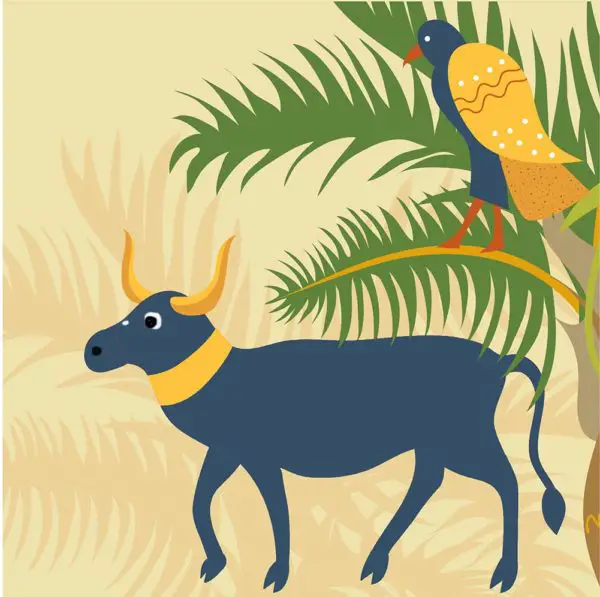Herodotus: The Sacred Animals of Ancient Egypt

Sacred Animal in Ancient Egypt
Dedicated to Dekayla, Samantha, and Brooke in California
This is Bertie, and I’m here with some more from Herodotus, the father of history who lived 2,500 years ago. Herodotus was a Greek who liked to travel. He went around much of the Persian Empire, including Egypt, and wrote down what he saw. A fair bit of what we know about life in Ancient Egypt comes to us from Herodotus.
In the last episode, I told you about some of the wild animals of Ancient Egypt that Herodotus mentioned. In this episode, I’m going to be focusing on the animals that the Egyptians worshiped as gods.
The holiest of all animals in Ancient Egypt were cows and bulls. The ancient Egyptians were not the only people to worship cattle.
`
For example, in ancient times, bulls were worshiped on the Greek island of Crete - the home of the bull god, the minotaur - and cattle are sacred to Hindus to this day.
And perhaps you know the story of Moses from the Bible. He and his fellow Israelites escaped from captivity in Egypt and crossed the desert. On the way, they paused while Moses climbed up Mount Sinai to fetch a stone tablet on which were written the Ten Commandments - or laws like You Shall Not Kill.
While Moses was away climbing the Mountain, some of his followers lost faith in God and began to worship a golden calf.
In many religions, gods and animals are associated with ideas.
People might worship a bull because he represents strength and masculinity. And they would worship a milk-giving cow because she represents motherhood and nurturing. Perhaps they would pray to their cattle gods for a strong healthy family and nation.
In ancient Egypt, bulls or cows were sometimes seen as gods on earth. For example, in the city of Memphis people worshiped a bull called Apis or Hapi. The priests of Memphis always kept one bull to worship. They knew he was Apis because he would be black with a white crescent shape on his side or a white triangle on his forehead. When he died, they found another bull with similar markings.
But the ancient Egyptians were not vegetarians - and unlike Hindus today - they did sometimes eat beef.
The sacrifice of a bull was an extremely solemn ceremony for the ancient Egyptians. The priests would choose a black bull and check that it did not have a single hair that was not completely black. When they had killed it, they would cook the meat of the body, and they saved the head of the bull. They prayed that all their evil and bad fortune should be transferred into the head of the bull. Then they would take the head to the market, and if there were any Greek traders there, they would sell it to them. But if there no Greeks to be found, they threw the bull’s head into the river.
This odd ceremony was a way of getting rid of evil. There is a similar idea In the Bible when the people of Israel prayed all their sins onto a goat, and then cast it out into the desert. To this day, if we say that somebody is a “scape-goat” we mean that they are being blamed for other people’s wrong-doing.
Bulls were far from the only sacred creatures in ancient Egypt. The god Horus was often shown as a man with the head of the hunting bird called a Falcon. Falcons have fantastic eyesight, and as they soar through the sky they can spot tiny animals on the ground. Kings are also meant to be farsighted and wise, and so Horus the Falcon god was closely associated with the Egyptian Pharaoh. The Pharaoh may even have been the god Horus in human form, or so the ancient Egyptians believed.
I mentioned in an earlier episode how the Egyptians loved cats.
Cats kept families safe by killing snakes and rats. The cat goddess was Bastet and every year the ancient Egyptians celebrated her with a huge party. They sailed down the river Nile to her temple at Perbast singing and dancing and rocking the boats on the way.
Herodotus tells us that if a home caught fire, people would save the cats before trying to save themselves. And if a household cat died, the whole family would shave their eyebrows to show their grief.
And if anyone killed a cat, they were guilty of murder and the penalty was death, which shows how much Ancient Egyptian respected cats.
But the way, our word cat comes from the North African word “quattah.” But the ancient Egyptian word for cat was Mau because cats make a sound like MAU.
Dogs were also important. The god Anubis who guarded the underworld had a dog’s head. The head of Anubis looks a little bit like a greyhound. There are also dog breeds today called Basenji and Pharaoh hounds that come down to us from Ancient Egypt.
Rich Egyptians sometimes kept Gazelles that were renowned for their grace and beauty. The Egyptian Queen Isiemkheb loved her pet gazelle so much, that when the deer died, she was mummified and placed with jewels inside an ornate box called a sarcophagus.
The god Sobek had the head of a crocodile, and the priests of his temples kept sacred crocodiles and fed them on the most tasty cuts of meat and honey cakes.
And of course the mighty and mysterious Sphinx - often shown in giant statues - was a man with the head of a lion.
For me, the animal gods are a large part of what makes ancient Egypt so fascinating, along with the mighty pyramids, the ancient mummies, the rich treasures, and the barges floating down the river Nile. It really was a civilisation like no other.